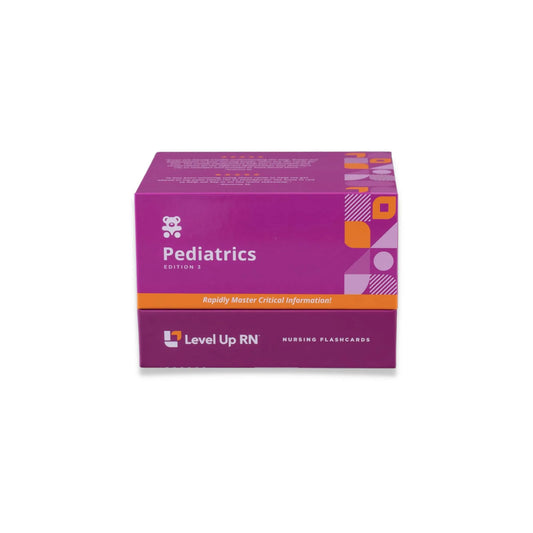Hi, I'm Cathy with Level Up RN. In this video, I will be discussing celiac disease. And at the end of the video, I'm going to give you guys a little quiz to test your knowledge of some of the key points I'll be covering, so definitely stay tuned for that. And if you have our Level Up RN Pediatric Nursing Flashcards, go ahead and pull out your flashcard on celiac disease so you can follow along with me and pay close attention to the bold red text on this card because those are the things that you are likely to get tested on in nursing school.
Celiac disease is an autoimmune disorder where the ingestion of gluten, which is a protein found in wheat, rye, and barley, causes damage to the villi in the small intestine. So the villi are finger-like projections that line the small intestine and allow for the absorption of nutrients. So over time, damage to the villi leads to malabsorption as well as permanent intestinal damage. Signs and symptoms of celiac disease include lethargy, abdominal pain, and distention, diarrhea, steatorrhea, which is where we have loose malodorous fatty stool, vomiting, constipation, and failure to thrive. And because celiac disease impairs the absorption of key nutrients, it can cause anemia due to impaired absorption of B12, iron, and folate.
Tests that may be ordered to confirm the presence of celiac disease include serological tests, which check for the presence of specific antibodies in the patient's blood, as well as a biopsy of the patient's small intestine, which would be obtained through an EGD. Treatment of celiac disease includes a strict gluten-free diet. So a gluten-free diet means the patient will need to avoid foods that contain barley, rye, and wheat, as well as possibly oats. So to be clear, pure oats do not contain gluten, but they are commonly processed in facilities that process gluten-containing grains. So the risk for cross-contamination is very high.
Our cool chicken hint to help you remember which foods need to be avoided is to think brown. So B for barley, R for rye, O for oats, W for wheat, and N for nope. So you should advise your patient to substitute these grains with alternative grains such as corn, rice, or millet.
All right. It's quiz time. Are you guys ready? I've got three questions.
Question number 1. With celiac disease, ingestion of gluten causes damage to the blank?
The answer is the small intestine, and specifically the villi in the small intestine.
Question number 2. Which grains contain gluten?
The answer is barley, rye, and wheat.
Question number 3. Why do some providers recommend that patients with celiac disease avoid oats?
The answer is because they are commonly processed in facilities that process gluten-containing grains. So the risk for cross-contamination is very high.
All right. That is it for this video. I hope you found it to be helpful. Take care and good luck with studying.


